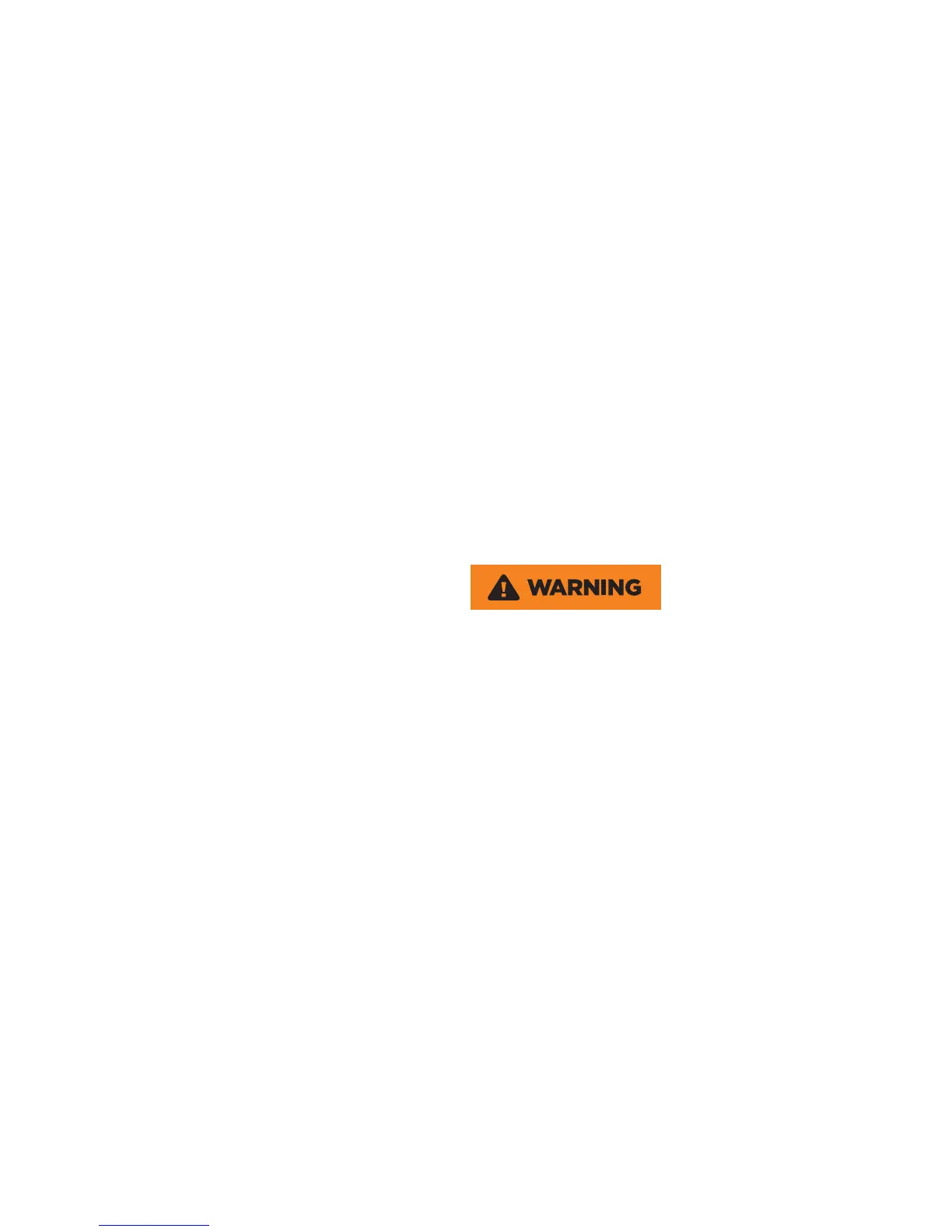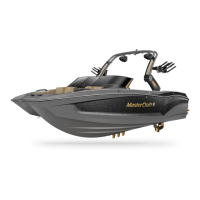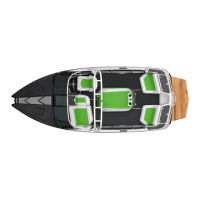Because our models have different weights, lengths, speed
and performance, it will take some practice for the operator to
understand how the boat reacts with the attitude adjustment plate
installed. The plate will allow your boat to get on plane faster and
continue planing at lower speeds. This will improve visibility and
the overall safety of your boat. When making adjustments with the
attitude adjustment plate, use short momentary taps of the switch.
Continued practice will help you become familiar with how the
plates perform.
Special Attention
Because these plates can adversely affect boat handling if not
utilized properly, the following information is provided to assist
operators in determining the correct usage of the attitude
adjustment plate(s).
Special Conditions
Head Sea: Lower the plate by tapping slightly on BOW DOWN on a
single system. This will bring the bow down while maintaining speed.
This also allows the hull of the boat to absorb the impact of the
waves. This adjustment will result in a more efficient and smoother
ride. Changes should be made in small increments to ensure
maintaining control of the boat.
Following Sea: Make sure the plates are fully retracted by pressing
BOW UP on both sides of a dual system, and BOW UP on a single
system. This will bring the plate(s) up to a fully retracted position, d
decreasing lift in the stern and allowing the bow to rise. If the
plate(s) is/are deployed, the bow may dig.
Shallow Water/Hole Shot: Lower the plate completely by pressing
BOW DOWN. This provides lift in the stern of the boat and will keep
the bow down. As you throttle up and speed increases, raise the tab
by pressing LP.
Porpoising: To stop porpoising, press BOW DOWN on the attitude
adjustment plate control. The plate(s) needs only to be deployed
slightly to correct this adverse situation.
Improper use of attitude adjustment may result in loss of control,
which could result in serious injury or death.
• While at higher speeds, do not over-trim, as this will cause the
bow to lower quickly, resulting in a reduction of speed and may
cause the boat to veer.
• When in following seas or when running an inlet, the plates should
be fully retracted. This will allow for optimal performance.
• Electromechanical actuators provide an instant response. When
making adjustments, use short momentary taps of the switch.
